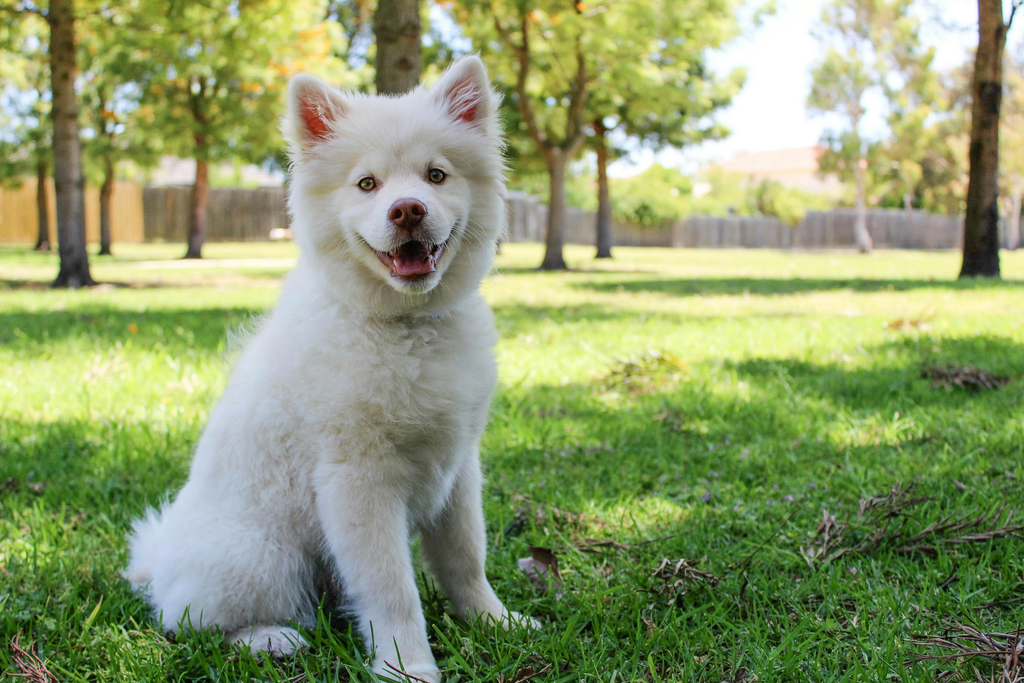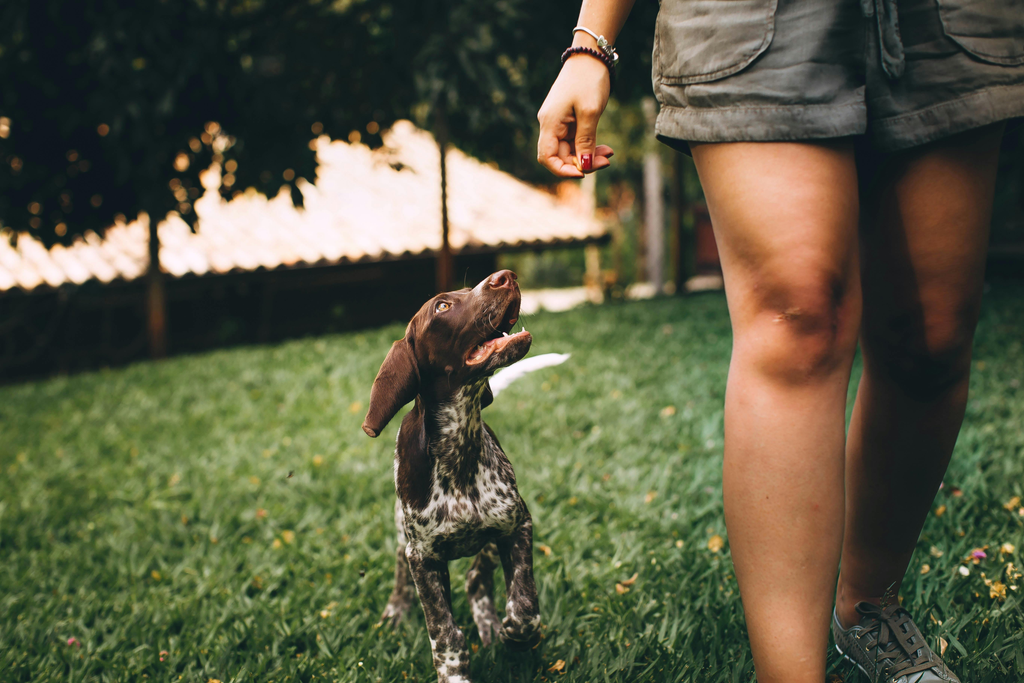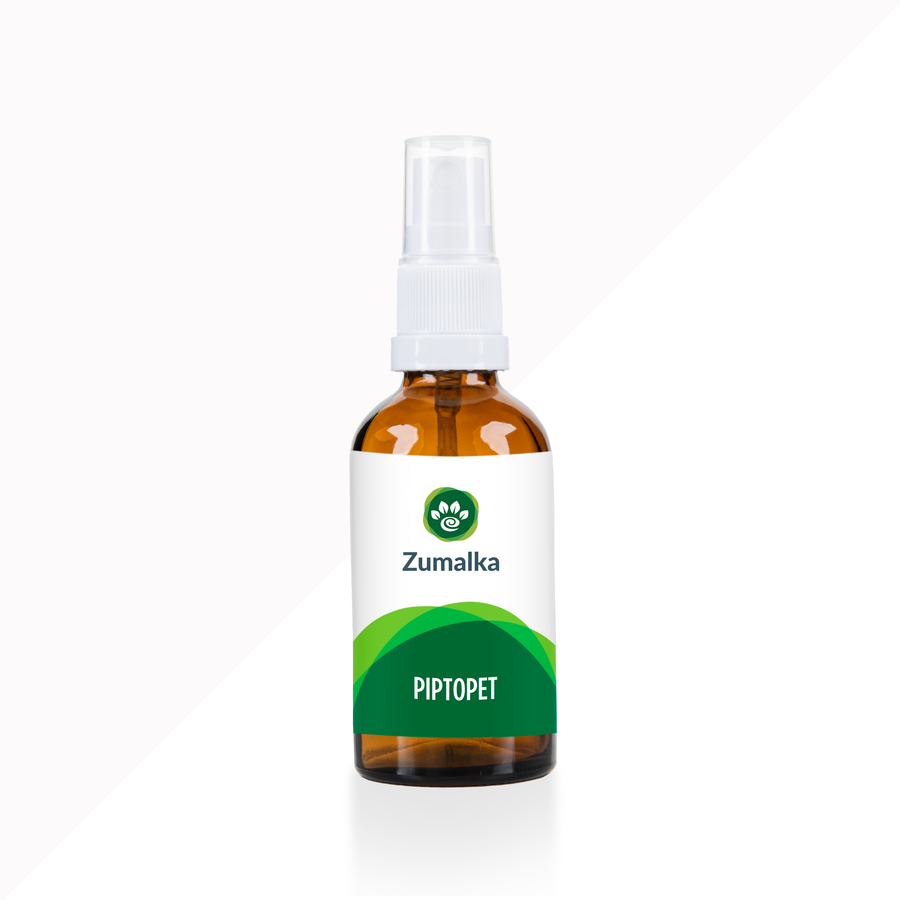What Is Skin Cancer in Dogs?
So here's the situation...
You and your canine best friend are having a cuddle session when you notice an irregular bump or knot on your dog's skin. While it could just be something run-of-the-mill like a mosquito bite, a rash, or some other everyday issue, there's also a chance it may be dog skin cancer.
Sure you may think that the possibility of your pooch having skin cancer in dogs is a long shot, but there is still a very small chance that he could be prone to this serious health problem. We've put together this blog post to walk you through all the important things you need to know about dog skin cancer.
A dog's skin cancer can still be deadly and should not be neglected
Before we go on, though, we'd just like to highlight the fact that just like all types of canine cancer, the odds that your pet overcomes dog skin cancer will be much higher if it is caught early. Unlike what a lot of people mistakenly think, dog skin cancers can still be fatal if not given immediate and proper attention.
Apart from giving you a rundown of the symptoms to keep an eye on, we'll also talk about the types of skin cancer in dogs, the risk factors involved, the treatment options you can go for, as well as other important things you should know about.
You can also refer to our complete guide to dog cancer for more informative bits and pieces on the disease. How about we start things off by taking a look at the different types of cancer that can affect your dog's skin?
What Types of Skin Cancer Affect Dogs?

Contrary to popular belief, the term "dog skin cancer" is an umbrella term that is used to describe a variety of malignant tumors—as compared to benign tumors that do not progress into cancer—affecting a dog's skin.
It does not only characterize a specific skin health issue but has several types. Below are the different types of skin cancer that can potentially harm your dog's body in the form of malignant skin tumors:
1. Mast cell tumors in dogs
Regarded as one of the most common skin tumors in dogs, mast cell tumors (MCT) mainly affect white blood cells found in the immune system called mast cells. Around 21% of dogs can be diagnosed with this type of malignant skin tumor. There are also cases where multiple mast cell tumors can be present.
Mast cells release histamine, which is used by a dog's body to send messages, particularly warnings when there are potential breaches in the immune system. These may be in the form of allergy-like symptoms like having a runny nose, sneezing, and causing itchy spots.
When mast cells release histamine (along with other natural compounds and chemicals), this process is called "degranulation." A genetic mutation attributed to proteins is often speculated as a trigger for the development of mast cell tumors.
While mast cell tumors occur usually in the skin, this type of skin cancer can also affect other organs like the bone marrow, intestines, liver, and spleen, among others. The breeds that are more vulnerable to mast cell tumors compared to other pedigrees include Boston Terriers, Labrador Retrievers, Weimaraners, Staffordshire Terriers, Cocker Spaniels, Pugs, and English Bulldogs.
One very interesting thing about mast cell tumors is that they can appear quite small and insignificant in some cases, while they can be very prominent in other instances. To elaborate, mast cell tumors can appear as small yet unusual lump that can easily be overlooked or a swollen, inflamed mass.
Regardless of their appearance or size, mast cell tumors need to be dealt with immediately to prevent the malignant mast cells from causing more damage to the surrounding tissue.
2. Squamous cell carcinoma in dogs
Compared to mast cell tumors, squamous cell carcinomas (SCC) are more uncommon in canines. While squamous cell carcinoma also stems from the skin, it usually develops from the middle and outer (or top) layers.
A typical squamous cell carcinoma may only form one bump or lesion, but there are some cases where multiple bumps or lesions can develop. These are referred to as "multicentric" squamous cell carcinoma. These types of squamous cell carcinomas are extremely rare and are also technically called Bowenoid carcinoma or Bowen’s disease.
And akin to common skin tumors, most squamous cell carcinomas may appear pretty much anywhere on a dog's body, but they can be typically found on top of the snout or nose, lower legs, paw pads, scrotum, the nail bed, lower abdomen, anus, as well as the back. This type is usually treated with surgical removal.
Like most malignant skin tumors in dogs, squamous cell carcinoma may appear as an inflamed bump, but it will usually have crusty spots in and around the affected area. Similar to other malignant tumors, squamous cell carcinomas can affect all dogs.
However, breeds like Whippets, Basset Hounds, Dalmatians, Standard Poodles, Bloodhounds, Beagles, German Shorthaired Pointers, Norwegian Elkhounds, Labrador Retrievers, Golden Retrievers, Rottweilers, and American Pit Bull Terriers have an increased risk of this serious health issue.
3. Malignant melanomas in dogs
Another prominent type when it comes to cancerous skin tumors in dogs is malignant melanoma. At its simplest, malignant melanoma tumors stem from cells called "melanocytes" that produce melanin, which is a form of dark pigment.
Apart from the skin, melanocytes can also be found in the eyes. Malignant melanomas are even regarded as some form of a trigger that "activates" hair follicle tumors since they target skin areas that have hair.
Due to the presence of melanin, this type of malignant tumor is usually dark in color. The cancerous tumor location can be anywhere there is skin that has hair, but often on the foot (particularly in and around the area where the paw pad and toenail meet), within the eye, and more commonly in the mouth.
A very important thing to keep in mind when it comes to malignant melanomas is that the particular tumor location may give a clue if a tumor becomes cancerous or not. Those that form in areas where there is hairy skin and eyes are often benign melanomas, while those that develop in the nail bed and mouth are considered the most malignant melanomas.
What's really alarming about malignant melanoma tumors is they tend to eventually spread to different parts of the body like the internal organs, the local lymph nodes, the spleen, the liver, and the regional lymph nodes, among others.
While they can occur in any breed, Miniature and Standard Schnauzers, Boston Terriers, Springer Spaniels, Doberman Pinschers, Chihuahuas, Scottish Terriers, Gordon Setters, Boxers, Airedale Terriers, and Scottish Terriers are considered more at risk.
The moment you suspect that your dog has melanoma—especially melanomas affecting the mouth and the nail beds (subungual melanoma)—it is crucial that you consult with a pet wellness expert or a veterinarian as soon as possible. Remember that the chances of helping overcome your dog's cancer are much higher if it's detected at its early stages.
4. Histiocytic cell tumors in dogs
Another type of skin cancer in dogs is the histiocytic cell tumor. This serious health problem is associated with the histiocyte, a form of immune cell that can be found in the connective tissue. Compared to the previous ones that we've touched on for this part of the discussion, histiocytic cell tumors can be quite rare among dogs.
We'd just like to stress that histiocytic cell tumors are different from histiocytosis. A malignant tumor of this type can spread fast and may have almost immediate fatal consequences if untreated. It also affects younger dogs compared to older dogs. Moreover, histiocytic sarcoma affects Bernese Mountain Dogs, Rottweilers, as well as Flat-Coated Retrievers.
Is Skin Cancer Similar to Soft Tissue Sarcomas?
The short answer is no.
As we've explained earlier, the term "skin cancer" embraces all types of cancerous tumors affecting the skin, such as malignant melanoma melanomas, squamous cell carcinomas, basal cell tumors, and mast cell tumors.
Alternatively, the phrase "soft tissue sarcoma" pertains to a tumor that affects the cells of soft, healthy tissue. Skin cancer is a much broader term, while soft tissue sarcoma refers to a particular type of the former.
The Importance of Dogs Skin Cancer Caught Early
The biggest reason why skin cancers in dogs should be caught early is that the chances of the same being treated successfully are much higher. Regardless of the type of malignant skin tumor you're dealing with, early detection can mean the difference between life and death for your canine best friend.
It doesn't matter if you're opting for conventional treatment options like radiation therapy, surgical removal, chemotherapy, or a combination of these. So long as the cancer has already metastasized or spread to other organs or different parts of the body, survival time and recuperation will significantly decrease.
Are Canine Skin Tumors the Same as Skin Cancer?

The short answer is no.
Unlike what a lot of people mistakenly think, canine tumors and dog cancer are not the same. You can think of a tumor as an assembly of abnormal cells that can have an impact on various parts of a dog's body.
Besides affecting the lymph nodes, this collection of tumor cells can also develop in the liver, spleen, kidney, and skin, among others. Although tumors are not usually life-threatening (as in the case of benign tumors), they still need to be given proper treatment and support. Common examples of these include hair follicle tumors and mast cell tumors.
On the other hand, cancer is a tumor that has already become malignant. For example, a mast cell tumor can progress into mast cell cancer. This is the same with tumors affecting the lymph nodes progressing into lymphatic cancer. Compared to tumors, dog skin cancers can be fatal in nature if not detected early and dealt with the right way.
Difference between primary tumor and secondary tumor
"Primary tumor" means where the tumor began in a dog's body. If it has already spread to a different area, that tumor will now be referred to as a "secondary tumor." Using the example given above, melanoma tumors that have formed in the mouth can "move" to other areas like the local lymph nodes.
The melanoma tumor in the mouth is the primary tumor, while the tumor affecting the lymph nodes is the secondary tumor. Now we've got that covered, let's check out the difference between benign and malignant tumors...
Benign vs Malignant Tumors
Differentiating these two terms is not tricky at all. A "benign tumor" will not spread to other organs or other parts of the body. While they may become rather big, benign tumors won't become cancerous sooner or later.
Just a quick reminder, though. If you’ve found a tumor on your dog, though, it doesn’t necessarily mean cancer! Between 60-80% of skin tumors in dogs are benign. This means that they are considered non-cancerous and they don’t spread to other parts of the body.
However, we still highly recommend that you get an accurate diagnosis from your veterinarian to avoid any untoward issues along the way.
Is Skin Cancer in Dogs Fatal?
Unfortunately, skin cancer in canines can be life-threatening for your furry friend.
Malignant mast cell tumors and melanoma tumors have been seen to have fatal consequences if not properly taken care of. If you're noticing that your dog is having a lot of allergic reactions or hormonal abnormalities lately, make sure you contact your veterinarian as soon as possible.
The same goes if you observe that your dog has some questionable bumps, lumps, and similar skin irregularities. The manifestation of tumor cells varies from one type to another. So long as you think that certain scratch or bump is something else, have your vet diagnose skin cancer immediately just to be extra sure.
What Does Skin Cancer in Dogs Look Like?

Although there are different types of skin cancer with varying symptoms, there are some signs you can be alert to. Keep in mind to look out for anything out of the ordinary. You can use the examples below as a quick guide:
-
Unexplained lumps in the skin
-
A firm raised nodule that resembles a wart (sebaceous adenoma)
-
A solitary black or brown mass
-
Excessive itching and redness in and around the affected area (this applies to hair follicle tumors)
-
Gray/pink lumps in the mouth
-
Excessive allergic reactions
-
Bad breath and overactive mucous membranes (this applies to malignant melanomas)
-
Stomach ulcers (this applies to mast cell tumors)
The time you spend regularly washing and grooming your dog gives you a perfect opportunity to check up on your pup—in between snuggles, of course! The earlier you can detect and treat any cancer found in your pooch, the better.
What Causes Skin Cancer in Dogs?
Notwithstanding the modern developments in veterinary medicine, the exact cause of canine skin cancer is still unknown. But the thing is that there are some "risk factors" that are seen to be closely associated with this terrible disease.
Risk Factors That May Trigger Dog Skin Cancer
For this part of our discussion, we will touch on what these risk factors are so you can also have an idea of what to keep clear of in terms of dog skin cancer...
Age
As a dog ages, his body will be susceptible to a lot of physiological changes that can have an effect on his overall health. One of these changes is a decline in immune system wellness, which puts older dogs at risk of issues like skin cancer. This is the biggest reason why boosting your dog's immune system health as early as now is a must.
Genetics
Generally, genetics are viewed as the leading cause of cancer in dogs. Studies show that male dogs are more prone to skin cancer compared to females. Moreover, certain breeds of dogs are also seen to be susceptible to particular types of skin cancer.
Environmental factors
It has been theorized that constant and excessive sun exposure could potentially lead to skin cancer in dogs. According to studies, overexposure to harsh ultraviolet (UV) light can cause damage to skin DNA as time goes by, which can set off skin cancer. Additionally, too much sun exposure can lead to sunburn, which can also cause uncomfortable bouts of skin itchiness.
Underlying health issue
As explained earlier, mast cell tumors can disrupt the ideal release of histamine in the body. Should your pet display sudden episodes of allergic reactions, there is a very small possibility that it could be a sign of some form of skin cancer.
Diagnosing Skin Cancer in Dogs
As we've stressed earlier, an accurate diagnosis is needed to really determine if your dog's skin is affected by cancer. The most common methods for diagnosing this health problem are through fine needle aspiration (FNA) and core tissue biopsy.
The former uses a very fine needle to extract tissue samples from the affected area for testing. On the other hand, the latter is quite similar to FNA yet uses a wider needle in getting the samples. Core tissue biopsy is often used to get more samples in one go.
Conventional Treatment Options for Skin Cancer in Dogs

As regards the conventional treatment options for canine skin cancer, the most common recourses are surgical removal, radiation therapy, immunotherapy, and chemotherapy. We will briefly discuss each of these for this part of our discussion:
Surgical removal
Surgical removal or surgical excision refers to the taking out of malignant tumors, lesions, moles, and similar irregularities. While surgical removal can be resorted to as a standalone treatment, it can also be used simultaneously with other options like chemotherapy and radiation therapy.
We'd just like to emphasize that surgical removal is very invasive for your dog. The aftercare can also be rather challenging, especially when it comes to helping your pet through post-operative pain and discomfort.
Radiation therapy
As the name implies, radiation therapy utilizes high amounts of radiation to get rid of cancer cells. It uses the same type of radiation harnessed in X-rays. A "milder" version is also available to make tumors shrink in size.
A very prominent downside of radiation therapy is that it also kills healthy cells. This sets off unpleasant side effects for your dog like fatigue, loss of appetite, changes in skin coloration, as well as dry and scaly skin.
Immunotherapy
Immunotherapy is an "artificial" way of supercharging your pet's immune system so that it fights skin cancer more thoroughly. However, this may sometimes stimulate a dog's immune system response so much that it can potentially cause a situation called "immune-related adverse effect" or irAE where healthy cells will also be attacked in the process.
Chemotherapy
Chemotherapy works by preventing cancer cells from growing and spreading. This type of conventional treatment utilizes powerful drugs to do just that. And just like other conventional treatment options, it also has its downsides for your pooch like killing healthy cells, numbness, constipation, anemia, sudden weight loss, hair loss, and the appearance of bruises.
But did you know that there is a way to support your dog during skin cancer?
Can Skin Cancer in Dogs Be Treated Naturally?

If you’ve noticed an abnormal lump and your veterinarian has confirmed a skin cancer diagnosis, you want to start treatment right away. Of course, you want to do anything you can to help your companion. Here at Zumalka, we share your desire to provide natural products to support your dog's health during his fight against cancer.
PIPTOPET is a broadband antiviral and antibiotic mother tincture designed as a natural aid. With undeniable anti-inflammatory and anti-tumor properties, it helps the body in its fight to target unhealthy cells while leaving healthy ones intact. It’s also an incredible immune system booster, better equipping your dog’s ability to fight the disease.
And don't just take our word for it, too! Many dog parents around the world have already experienced the wonders and benefits of PIPTOPET. You can check its favorable reviews on Dogster, Catster, and Hepper. If you're looking for a natural option to help your dog during skin cancer, PIPTOPET is an option you should check out.
While a cancer diagnosis for your pup can be hard to hear, hopefully, this information helps you be informed and able to care for your dog, no matter the circumstances!





Hi Anji,
Thank you for your comment! I’m very sorry to hear about your dog’s case. I will reach out by email to answer your questions about the excellent benefits of the Piptopet!
Trying to find an answer to my labrador’s squamous cell on his leg. Reading your website and came across a confusing sentence your marketing manager would want to rectify.
anti-inflammatory and anti-tumor properties, it help the body in his fight to targets unhealthy cells while leaving
Leave a comment